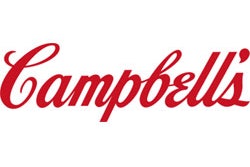The food industry is changing. Independent, cooperative and multi-generational family-owned businesses that have flourished for decades are now looking for ways to survive in a down economy and as larger food distribution companies look to diversify and grow market share. Greg Cannon, senior vice president of U.S. Bank Food Industries, discusses what is driving consolidation and what the industry can expect in the near future.
Q: What is driving the recent consolidation activity in food distribution?
A: There are a number of factors influencing the acquisition activity that we have experienced the past several years and are likely to see into the near future. To understand the consolidation trends, it’s important to understand how the industry operates. Food distributors serve two key markets: grocery stores and food services at hospitals, restaurants, schools and other venues. Many of these companies are small, specialty businesses that focus on a specific type of restaurant or operation. The vast majority are privately held and family owned, and are also experiencing generational ownership changes. The fact that they serve niche markets makes them attractive acquisition candidates of large distributors looking to grow market share.
For most distributors, business has slowed because of rising food prices and a decline in restaurant traffic. Food inflation is up and likely to continue to grow, driven in part by drought conditions across the country. These factors make it difficult for many companies to grow organically. The good news is people do not eat less in a down economy, rather they change how and where they consume their calories. To be effective, companies need to react to those changes and fill the food service needs for a growing volume and variety of customers. Businesses that only supported high-end restaurants in the past now need to support all restaurants. Good distributors have a balance and serve all markets. To achieve this balance, and to grow their market share, many distributors are in acquisition mode.
Q: You mentioned rising food costs. What is causing this rise and how will it impact food production and distribution?
A: Because of the recent droughts, the prices of corn and soybeans are on the rise. The demand for corn has never been higher, as it is used to make ethanol, animal feed and it’s a staple ingredient in many products that consumers eat every day. As a result of the growing need globally for corn and protein and a now diminished supply, we are starting to see the impact on food prices across the board.
Protein producers pass the rising costs onto their consumers, and the same thing is happening with food ingredients. Companies that buy the ingredients in bulk must either pass the costs onto consumers or adjust the amount of product that goes into boxes for store shelves or the portions of the foods that they serve to diners. It’s fairly evident that portion sizes at restaurants are not the same as they used to be. Food is a thin-margin business and to stay competitive and remain efficient, food distributors have to quickly adjust to the inflation.
The larger distributors have pricing advantages that the smaller companies do not. This is another factor driving consolidation. When you are buying a lot of food, you can negotiate pricing. Independent operations do not have that same leverage, thus they will likely sell to a larger food distribution company.
Q: What is U.S. Bank Food Industries advising its food distribution clients to help them remain competitive, efficient and on solid financial footing in today’s marketplace?
A: The uncertainty of the economy is creating volatile market conditions for food distributors. As a result, liquidity is critical. With the proper capital structure, food distributors can remain liquid, which will help them when times get even more challenging. For stronger companies, liquidity will also allow them to make the appropriate acquisitions so that they can continue to diversify and increase their market share.
Several of our clients are engaged in acquisition activity. Recently, an East Coast-based food distribution company expanded by acquiring an independent distributor which serves customers across the Midwest. This acquisition strengthens the food group’s position in the region while providing the independent distributor with a national scope and broader purchasing power.
Another client was solely focused on serving natural food stores. A strategic acquisition of a specialty products wholesaler that served traditional supermarkets allowed it to grow additional market share outside of its traditional product and customer base. Supermarkets are now dedicating aisles of space for organic and healthier food options, and as a result of its acquisition, they now supply other grocers with natural products, in addition to specialty products.
For our clients, we look at ways to help them become more liquid so they are prepared for whatever conditions they face or activities they pursue in the future. Whether it's moving them to an asset-based structure or issuing debt, we focus on customizing a capital structure that will meet their needs.
Q: What can U.S. Bank Food Industries offer food companies?
A: U.S. Bank is the third-largest bank in the food industry, and one of the only banks that has a sector-driven focus on food distribution. Companies want to know that their financial partner understands their business as well as their market. Clients want ideas on how to properly finance their operations, and what products and services will best help them achieve their business objectives. From purchasing card programs, fleet card programs, syndicated finance, private placement of debt, payroll cards, U.S. Bank offers a full suite of solutions to help food companies increase efficiencies, stay competitive and grow.
Greg Cannon ([email protected]) joined U.S. Bank in 2008 as a Client Manager serving companies in the food and agribusiness industry. Cannon has 23 years of corporate finance experience advising clients with various capital raising needs. Previously, he worked as a Managing Director with SunTrust Robinson Humphrey where he raised debt and equity capital for large and mid-cap companies in the food andagribusiness industry. Cannon has a Bachelor of Science degree in Banking and Finance from the University of Southern Mississippi and has attended advanced corporate finance courses at the London School of Economics. He is a past member of the National Chicken Council Board of Directors and the American Meat Institute.
This information represents the opinion of U.S. Bank and is not intended to be a forecast of future events or a guarantee of future results. This information is not intended to serve as a recommendation or solicitation for the purchase or sale of any particular product or service. It does not constitute advice and is issued without regard to any particular objective or the financial situation of any particular individual.


















